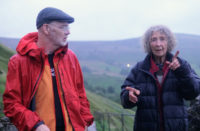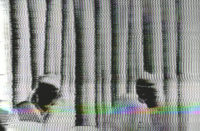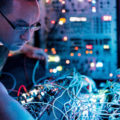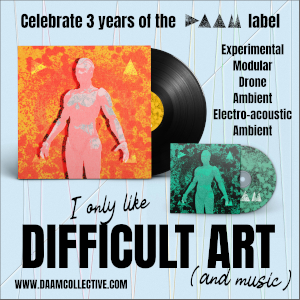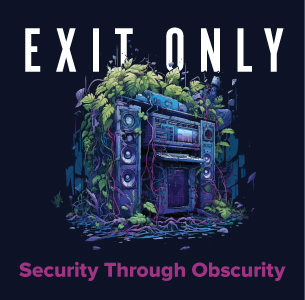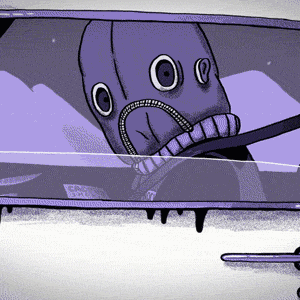::..:::…..:..::….:::::..:::..:::::::……:::…::.:::….::::..:..:::…::…….:::::

Creating sounds from a myriad of computers (9 of them to be precise), and an onslaught of gear at hand, Richard Coleman Devine (based in Roswell, Atlanta) has developed his sound one album at a time to achieve a defined aesthetic pulse that pushes the envelope miles ahead of the current wave of electronics produced today. Three albums (and several EP’s) worth of genre-bending releases including Lipswitch (Schematic/Warp), Aleamapper (Schematic), and the upcoming Asect:Dsect (Schematic/Asphodel) have garnered R. Devine a highly respectable spot amongst some of the leading producers across the map. With forward-thinking musical directions and acute attention to detail, Asect:Dsect (set for release in early October, 2003) extracts an infinitesimal amount of radiating rhythms layered with razor-sharp beats in a post-Industrial vein. It’s a formula that logically surpasses his previous work, one that is threaded with coherency and abstraction, but one that also keeps the attention of each listener from start to end.
Igloo Magazine had a chance to correspond with Richard Devine to delve a little further into the brain behind this electronic madness.
::..:::…..:..::….:::::..:::..:::::::……:::…::.:::….::::..:..:::…::…….:::::
Igloo: Is it possible to accurately describe your musical style and/or approach?
Richard Devine: I would say that it’s a combination of several styles and concepts. My initial goal was to try to create a new form of electronic music or style that was completely alien from other forms and was something that I could truly call my own. The main characteristics being that it was created entirely by machines and that the machines were the creators behind the music. I was trying to create music that seemed inhuman and foreign. Music that was ever changing and dynamic, and would ultimately take you places you have never been to before.
Igloo: Does your gear get as close to your original thoughts as intended?

RD: In many situations yes and sometimes the outcome turns out completely different. I usually try to create virtual environments where I have an infinite number of options to choose where the composition will go. As I create sometimes those parameters change drastically or sometimes manipulated subtlety. The gear I use now are computers and various hardware DSP systems which have now replaced some of my older analogue and digital systems. I usually allow for accidents to happen because sometimes those are the most interesting situations. Computing technology has reached a point where the user can completely design his own interfaces and environments for creating musical compositions. You’re not limited to manufactured synthesis systems and older synthesizer sampler technology. The user now has unlimited options in sound creation and manipulation. Hopefully as processing speeds go up you will see less and less hardware and more software applications take over. It will completely be based on human thought and what decisions the user chooses. This to me will be more interesting as everyone will have the same blank canvas and paint brush. Everyone will be judged on how creative they are and not by the tools they use.
Igloo: Trying to make electronic music feel more “human” is a task that many musicians take years to accomplish. How do you describe your relationship between the sounds in your brain and the sounds that you actually produce?
RD: Actually many times the ideas and sounds I am trying to create in my head come pretty close to actuality with the recent technology and tools available today. I can honestly say that wouldn’t have been a reality 5 years ago with hardware samplers and synthesizers. Although sometimes I run into situations where I don’t have enough computer power to do what I initially thought of in my mind. The process usually begins with a mood or sound texture that I map out in my head. I hear or create these sounds in my head then translate what my brain creates into the machines. The tools I use today have given me total power in sonic creation of new timbres and controllability. Many times the musical output is exactly what I had envisioned, and sometimes the outcome turns out more interesting then I had expected. The relationship to me is more of an artistic expression, much like when I paint, draw, or sculpt. I spend hours, sometimes days, just crafting the sounds and textures for one composition. The overall textures and sounds are integral to what makeup one of my musical compositions.
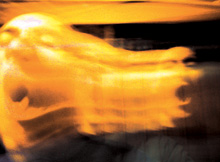
Sometimes it can be quite frustrating in that what I am trying to do in my head is impossible because of the computer processing limitations. My number one goal is to always express my style and approach with my work. I try to show my signature style and provoke emotions within the listener that they normally wouldn’t deal with. These emotions could be cold, impersonal, and alien. I sometimes try to create tracks or moods that provoke fear and confusion. My tracks may turn off many listeners who are looking for strong melody driven music that invokes the more typical human emotions. I am trying to deal with the ugly mechanical driven side of machines and technology, which isn’t always such a pretty place.
Igloo: Is there an association between Lipswitch, Aleamapper and your most recent Asect:Dsect?
RD: I think of it as a logical progression of experiments that I have conducted over the years. Lipswitch was my first full length album. I was merely trying to show people my sound and the world I came from. It was just an introduction to what I do. Then following Lipswitch I released Aleamapper which showed a completely different side of my work. It was to show my experiments within a more academic realm. I forced myself to use pure sound design and foreign manipulation techniques to invoke uneasy human emotions. I purposely stayed away from traditional instrumentation and traditional compositional writing to create something new and out of context. I wanted to push my sound in new ways and to push my own creative goals to new heights.
With Asect:Dsect I once again tried to do that but wanted to create a body of works that were more varied; almost like an album of electronic artistic concepts. I wanted Asect:Dsect to represent a more mature sound for me. The tracks are varied more and have a lasting quality to them where my other past compositions work around a theme. It was also different for me in that I wasn’t getting ideas through the sonic world during the creation of
Asect:Dsect but through the visual world. Most of the influences came from late modern Japanese architecture, and the works of John Maeda. I really try to push myself with each proceeding release, and dive into a completely different new world.
Igloo: What are some of your key studio processes when designing your music?
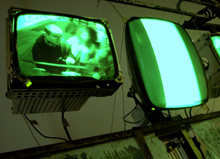
RD: Well, as you know, computers now play the most important role in the creation and manufacturing of my sound. I usually use about 10 to 15 different applications to create or design the sound from the ground up. It usually starts out with some sort of synthesis application, or sequence. I tend to use loads of FFT spectral floating point processing. Especially time domain functions like dividing wave cycles and time-contracting files by deleting wave cycles. A lot of the sounds that I create are usually designed within small applications that I create. Sometimes I will build these in Reaktor or Max/Msp or record these sounds from the outside environment. Lately I have been experimenting with sound interpolation, spectral vocoding, fractalizing, reshaping, and inverting wave cycles. I have really been into reshaping the shape and the text of sound lately. Thinking more like a sculpture would when carving out a work of art; instead I have been doing this with sound.
Igloo: Does your analogue gear get more use than software, vise-versa, or is it mutual between the two?
RD: I would say that they share a mutual place in my music. I often use analogue synthesis in many different situations. I still love old analogue sequencers, where everything is controlled via CV-gate (control Voltage). Especially analogue step sequencers like on the old Serge and Moog modular where you could control how much of the voltage would go through for any defined note. The room for error would totally work to your advantage. Working with the bigger modular systems taught me quite a bit; They each had such a distinctive personality and sound. I still use quite a bit of them in my music even today. Most of the time I might start out with something on one of the home built systems here and then process that material with newer technology. Eventually everything goes into the computer.
Igloo: What does your current gear comprise of?
RD:
::..:::…..:..::….:::::..:::..:::::::……:::…::.:::….::::..:..:::…::…….:::::
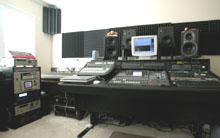
COMPUTERS ::
RECORDING ::
HARDWARE & EFFECTS ::
SYNTHESIZERS, SAMPLERS & SOUND MODULES ::
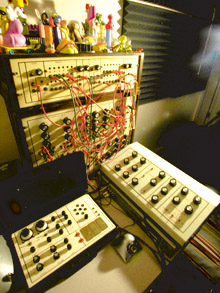 HOME BUILT ANALOGUE SYSTEMS ::
HOME BUILT ANALOGUE SYSTEMS ::
(3-oscillator, 3-filter system, much like a moog system 55); Then two monophonic analogue synths that were all completely custom built from scratch. He also constructed a home built frequency shifter based on the early BODE analogue frequency shifter design. We are currently rebuilding my Chaos synth that is a small touch (heat-sensitive synthesizer) that has two oscillators and a Kimchee module for voltage controlled distortion.
SOFTWARE & APPLICATIONS ::
::..:::…..:..::….:::::..:::..:::::::……:::…::.:::….::::..:..:::…::…….:::::
Igloo: When playing live you have a consistent flow from start to end, keeping audiences in tune with your aggressively intact frequencies. Do you enjoy playing live or working in studio?
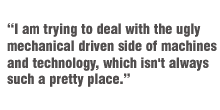
RD: I actually love to go out and play live. This is usually the testing ground for a lot of my newer material. I will almost always try new things here and see what happens. I usually design the live shows to work within a 1-hour time frame. I usually try to squeeze as much information as possible so that the audience gets the most entertaining musical ride possible. I always try to keep a consistent flow so that everything runs and transitions into each section creating this musical journey into the future. Playing live has forced me to integrate more energy within my tracks. I tend to play more dance tracks out live, as I never usually create dance tracks in the studio. When I work in the studio, I usually experiment more, and my compositions get completely abstract and loose.
Igloo: Do you always have video supporting your live shows? Is the visual aspect of “your sound” as important as the music? Can we expect any future projects to include these live visuals?
RD: I have been recently trying to incorporate some sort of visual system to my live shows. I have been working with several visual designers and lately want to progress into a full-blown DVD project (I’ve been working in DVD format for the past 5 months). I have been trying to switch my material over to the AC3 and DTS surround formats. Later next year I will have the project ready, with a visual narrative. I am still researching for the best methods for DVD authoring and want this next project to be really special. For my shows, I usually work with close friends of mine whom I know and are familiar with my work. We usually plan before the show and work up a skeletal mock up with the rough live set material. I think having great visuals is integral to a more interesting experience when playing live. But due to many financial and time constraints this never becomes a reality.
Igloo: Most of your musical influences are derived from a wide range of pioneering electronic outfits such as Meat Beat Manifesto, Skinny Puppy, Coil, Morton Subotnick, Cocteau Twins and Kraftwerk (to name a few). How would you explain your current musical direction in relationship to these producers?
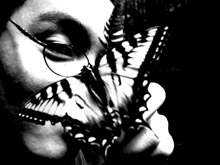
RD: Well, these are all artists that in some way influenced me at some point. I would have to say that Morton Subotnick and Coil are at the top of the list. I think it’s pretty evident how their work has impacted mine. As for my current work, I have actually pulled from completely outside sources for ideas and artistic direction. I have tried to remove myself from the current electronic music scene; Moving in my own direction where I can really define myself and focus on making my own sound.
Igloo: How long have you been producing? What are your roots, and how did you get your start?
RD: Well, I have been making electronic music for almost 11 years now. Most of my electronic roots were embedded early on when I was about 17 years old. I started listening to early punk and industrial. That included everything on the 4AD label to Coil, SPK and Skinny Puppy. I was also really into the early Midwest electronic music. I was totally into the early Detroit producers like Drexciya and Richie Hawtin. Then when I was 19 years old I inherited my good friend’s record collection that comprised of everything from early Herbie Hancock to the first John Cage Variations record (he gave me about 5 crates of early electronic). This was my first initial roots into the more experimental side of electronic music. I soon discovered the music of Terry Riley, Morton Subotnick, Stockhausen, and Kraftwerk. It was almost overwhelming at that time trying to absorb all this new material. These records laid down the foundation for what I was going to do. It completely changed my outlook and approach on my own musical style. Before that I was playing classical music on the piano. I learned more about musical theory and composition from this early excursion. I really started creating my own tracks when I was about 16 years old, starting out with several analogues synths, a Korg Wavestation and an Akai sampler. From there I slowly built up my studio and learn more on crafting my own sound.
Igloo: On Asect:Dsect there’s a small dose of relaxed frequencies breaking things up between the complexity of electronics. Is there any particular order or style associated with each track when you compile an album?
RD: For Asect:Dsect I tried to compile a collection of works that would all somehow be different on there own but work together as a whole project. I wanted the listener to have small breaks and interludes that would separate some of the more complicated works. I guess I wanted to give the listener time to absorb all the information. Usually my albums are based more on a specific theme or sound. Like my two previous releases which were totally different in sound and concept from each other. 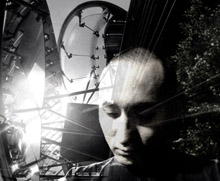 I try to push my sound and try to experiment with each release. With Asect:Dsect I wanted to incorporate more melodies and randomized programming. It was like trying to compile all my new artworks into one show. You will have these striking aggressive pieces then you will have these completely minimal Rothko style pieces that give you a more varied look into that persons world.
I try to push my sound and try to experiment with each release. With Asect:Dsect I wanted to incorporate more melodies and randomized programming. It was like trying to compile all my new artworks into one show. You will have these striking aggressive pieces then you will have these completely minimal Rothko style pieces that give you a more varied look into that persons world.
Igloo: Do you (still) partially run the Schematic label?
RD: I haven’t been doing much lately with the operations of Schematic, as I have been really busy working on my own projects. I still do quite a bit of A.R. for them from time to time, but my schedule has gotten overwhelming within the last two years. Romulo and Josh are still my best friends, and we still speak everyday.
Igloo: Besides creating music on a futuristic level, what else do you do to pass the time? Have you lived in Georgia all of your life?
RD: Well, lately we have been doing things outdoors. Like hitting the mountains in North Georgia and going fishing. Or like last week we were in the Okefenokee Swamp messing around with the alligators and wildlife around the irrigation canals. This weekend will be up at the edge of the world rapids chilling out there before the weather gets colder. I also skateboard at the local skate park here in Roswell. If I’m not doing that we usually party downtown, and I spin here in Atlanta at a club called Halio every other Friday night. Usually the best thing that I like to do is chill out with my girlfriend at the studio watching movies.
Igloo: What are you future goals and aspirations? Do you consider your music to be a career or hobby?
RD: My goal from this point would be working in feature films, doing sound design or films tracks for sci-fi movies. I am working on making the connections and trying to network into the film industry at the moment. I just finished up a DVD Demo reel of all my current work in Film and T.V. advertising. I am trying to hit up some of the big Film music production houses now like Lucas Arts Entertainment and Sky Walker Sound. I could easily see myself working within a great organization like this. At the moment I consider my music career to be a bit of both a hobby and real career. I can’t really say that it’s a real job because it’s like my art, and personal expression, which is much more of a relaxing therapeutic process for me. Then there is the business side of it that you can’t ignore when dealing with labels, licensing, distribution, manufacturing, and selling of records. It can sometimes taint your musical creativity and sometimes force you to make bad decisions, because the artist and the label sometimes have different objectives. They want to sell records and make money, and the artist just wants to get represented artistically. As for my own musical direction I want to take my music to DVD and work totally in Surround Sound DTS format. I think working with 5 or 7 speakers is a really interesting concept to toy with especially for electronic music.
Igloo: Have you been approached by any Corporations to produce music commercially?

RD: Yes, I have done work for TouchStone Pictures and Nike Shoes Company, doing film tracks and TV commercials in Japan and America. Both projects were a great learning experience, and I really got an interesting outlook into the corporate world. I hope to work in the future with more companies like this, because they helped me apply my musical skills in a real job situation. Prior to these projects I was only working my music to appeal to myself, and the scene surrounding it, but now I want to explore other realms and applications.
Igloo: Has Native Instruments (Germany) approached you in the testing and production of their products? If so, what kind of work are you involved with?
RD: Yes, I have worked with Native Instruments now for almost 3 years. I have participated on a number of software projects that included, Battery, Absynth, Reaktor, Spectral Vokator, Traktor, FS-Traktor, Synthetic Drums Sound Library, Absynth Sound Library. My work with them included Sound Design, Preset Design, and Beta Testing. I have done sound design presets for absynth and Spectral Vokator. I did a vast majority of the presets for both of these applications for their initial release. I also did sound design for several Battery/Kontakt kit libraries they released. I just recently took part in the Final Scratch version of Traktor, which is quite an interesting piece of technology. I am also working with them now on a couple of new projects that I can’t disclose at this time.
Igloo: What are your thoughts about MP3 file sharing? Do you think it hinders or sparks a musician’s success?
RD: I would have to say that its split situation. I honestly think there are some real benefits to mp3 trading on the Internet. It can be your means for distribution to the masses, especially if you’re an up and coming artist. You can now be easily heard and promoted with very little or no money. What other vehicle can get you the world as an audience and transferring abilities up to 10mb a second. I have met hundreds of people who discovered me through Internet file sharing communities. I grew up with music as a shared item among friends. I would always get burned CD copies of music frrom friends. We would mostly trade records that were out of print or no longer being manufactured. This habit even went back into the days when I was trading cassette tapes with friends. It was the same principle; we would all get things and educate each other about new music.
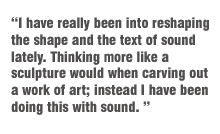
I still buy almost everything that I listen to. I have almost 6000 CDs now, and the catalog grows each week. I have probably spent more money on music then any other expense including my equipment studio. I also love the portability factor with the mp3 format. I always carry my Ipod with 40-gigs of music on me at all times. It’s truly amazing that technology has given us these wonderful tools to make all of this happened. Although I have seen some real disadvantages in the mp3 format too: First, it’s a compressed file format that kills audio quality so you’re not actually hearing what the artist originally intended. I have done many tests here at the studio to compare the different formats at variable rates to get the best results but nothing will beat 44.1khz stereo (.wav) quality. If you listen very closely to high definition records you will notice that the stereo imaging gets killed at almost 40% with any material, even if your encoding to the 392-bit rate. The high end starts to go first, with what I call the “sizzling effect”. The highs have this high-pinned sizzle sound, which is quite common on encoding at rates from 160-192. Much of the detail is lost when encoding to the mp3 format and my experiments with m4a format haven’t been much better. I love this format but prefer to listen to the CD when I am really researching some new artist.
Another downfall is that many times you don’t get the artwork and visual representation of what the artists was trying to accomplish. If you get mp3’s you’re only getting a small glimpse of what the artist wanted you to see. Sometimes they might include a crappy j-peg or TIFF file of the album artwork, which to me kills what the artist originally intended. It’s like putting all this hard work into something that people will really never see in its entirety.
Then finally I think the last obvious disadvantage to mp3 sharing is the financial implications. You will have a great number of people that will buy the album or record based off listening to the mp3’s. Almost like a try before you buy system, with some of these online music stores. Then you have places like Emusic and the I-tunes store that let you buy the licenses to the mp3s outright. I think this is good to as it is much easier to locate and find the music your looking for, and might be bad for the local record or retail store. I could go on all day about the likes and dislikes of it, but in the end I would have to say that I am neutral about the situation.
Igloo: What have been some of your most memorable collaborations and/or affiliations with other musicians?
RD: Well, I have had quite a few. I would have to say the collaboration with Matthew Herbert was very interesting as we came from to totally different backgrounds. It kind of mirrors my relationship with Scott Herron (Prefuse73) who shares the musical background with Matthew. I spent a week in London over at Matthews place. He was one of the kindest people I have ever run into. Matthew had a great understanding of all musical styles and appreciated everything from Stockhausen to John Coltrane. I would say he was one of he most well versed artists I have ever come into contact with. We remixed each other quite a while ago (my mixes came out on !K7 records, and his remixes are coming out this year on Schematic) as the Radio Boy meets Devine release.
I recently remixed Glen Velez for Schematic re-workings of Glen’s original album Internal Combustion. I was really excited, as his work has always fascinated me. I only used the sounds of the Irish frame drum, mostly my own drum the “bodran”. I bought a couple of them and have been recently studying the rhythmic techniques of Middle Eastern music. My recent remix was basically just me playing the bodran then re-programming my own parts into something totally new. The outcome turned out excellent, as I didn’t use any computer processing at all on the percussion sounds. I just wanted to truly capture the details and nuances of the drum, and how I would interpret Glen’s music. It was an interesting experience as it opened up my own playing techniques rather 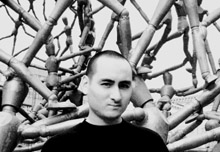 then relying on computer technology to get me there. I have since then added over 8 different hand drums to my studio including “tables” which I am studying now. I have also started to play didgeridoos and have picked up quite a few of the breathing techniques including circular breathing.
then relying on computer technology to get me there. I have since then added over 8 different hand drums to my studio including “tables” which I am studying now. I have also started to play didgeridoos and have picked up quite a few of the breathing techniques including circular breathing.
I am always open to collaborate with new artists especially if they come from a completely different world then mine, as I will hopefully learn something new about their approach and how I can change my musical approach.
Igloo: Any final thoughts, shouts, or concluding theories you’d like to shed amongst all of your loyal fans?
RD: Well, I guess my final thought would be to just stick with it, if you’re trying to make any form of art whether it is visual arts, graphic design, or musical composition. I think it’s important to never give up on your artistic vision no matter how strange it might be. There were times when I thought no one would understand what I was trying to create, but I soon realized that it had place in the world and that many listeners could learn from my creations. And if you’re just listening then I hope you listen with an open mind. I guess I have to say thank you to my mom who has totally supported me since day one. I don’t I would have gotten as far as I have without her support. I also have to thank my girlfriend and close friends for putting up with all my crazy shit. Especially my girlfriend who has said many times that I was the strangest person she has ever met.
::..:::…..:..::….:::::..:::..:::::::……:::…::.:::….::::..:..:::…::…….:::::
Asect:Dsect will be released October 7th, 2003 on Schematic/Asphodel. The Schematic Fall 2003 Tour is also underway starting in October. Check the Schematic Music Company site for all the details.
(Photos courtesy of Richard Devine, revised and edited by Pietro & Francesca Da Sacco)







